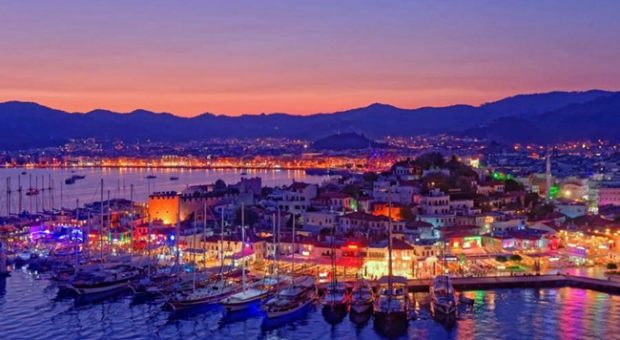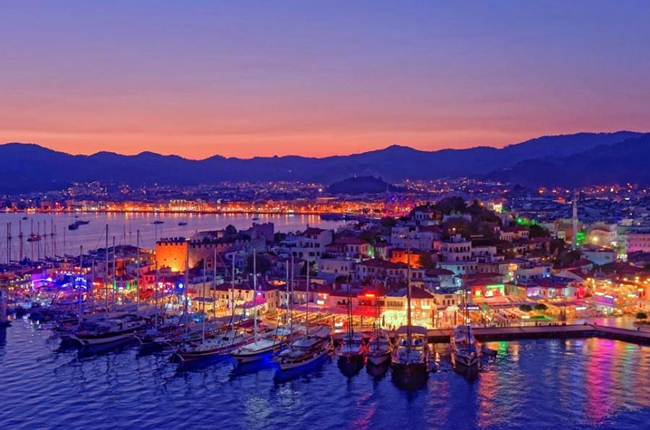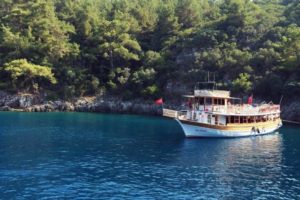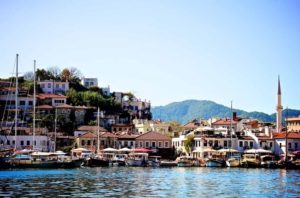Marmaris is one of the most famous holiday destinations in Turkey and is located on the Lycian coast. The town is located in the southwest of Turkey where the Aegean Sea and the Mediterranean Sea meet. The crystal-clear bay with its long sandy and pebble beaches is surrounded by mountain ranges covered with pine trees and countless Oleanders.
How many people live in Marmaris?
When you don’t count the tourists, the population of Marmaris is about 30,000 people in the town center. The hotels, apartments, and resorts in and around Marmaris are usually fully booked during the summer season. The demand is very high. The population rises to 500,000.
Marmaris in ancient times
In ancient times, Marmaris was called Phykos and was an important trading town on the route from Anatolia via Rhodes to Egypt.
Although the town lies on top of ancient Phykos, there is not much left from this period.
This beautiful town has still some important sights from the Ottoman period. Such as the old caravanserai from 1545 (now used as a shopping centre) and the ruins of the 16th-century castle of Süleyman the Magnificent (now a museum) and the 18th-century lbrahim Pasa Mosque.
Marmaris in the 80’s
Mass tourism in Marmaris started in the 80’s because it was the meeting place of the Turkish jet set. If you wanted to see a famous Turkish film star or singer, you were in the right place here. But further back in the past, before the tourism started the town was a sleepy fishing village in the Mediterranean Sea.
Marmaris Nowadays
Nowadays you will find several cafes, taverns and restaurants with good cuisine in the centre and the harbour area. The boulevard is car-free and has a fantastic sea view. Besides the beautiful beach and idyllic harbour, you will find many plenty more places to see. The old historic Grand Bazaar is located in the central bazaar and is still used as a marketplace. After 10 km on the Mugla road, you can see the Tashan & Kemerli Bridge which was built in 1552 by Suleyman the Magnificent. The tomb of Sariana was built in Ottoman style for the memory of Sariana because she helped the Ottoman troops with her prophecies.
























